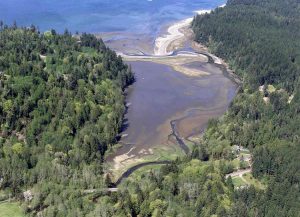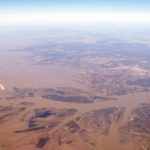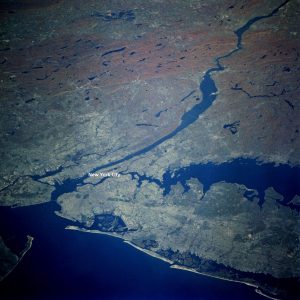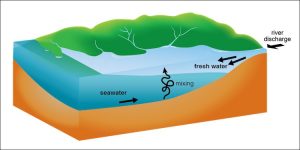Estuaries 101: 3 things to know about this important ecosystem
|
|
September 16-23 is National Estuaries Week! Learn more about events in your area and other ways to get involved at www.estuaries.org/national-estuaries-week.
1. What is an estuary?
Estuaries are transition zones between fresh and salty waterbodies.
Estuaries are bodies of water, as well the surrounding coastal wetlands, that are generally found where a river meets the sea – like the Mississippi River Delta. Because estuaries exist where two different types of waterbodies meet, they are influenced by diverse dynamics and are defined by multiple environmental gradients. An ecological gradient is a change that happens over space or time in a certain environmental factor, such as salinity, temperature, soil characteristics or nutrients.
The most influential gradient in estuaries is salinity because many plants and animals require certain salinity levels to survive, reproduce or thrive. Estuarine organisms also have to handle the changes that go along with tides and riverine flooding.
For plants, animals, and humans alike, living in or near an estuary can be very rewarding, because estuaries are highly productive ecosystems. They can also be physically stressful and require a certain level of adaptiveness, as salinities, water levels, and sediment loads change.
2. Why are estuaries so important?
Estuaries are very biologically productive.
The salinity gradient and the changes in tides, fresh water and accompanying flux in nutrients within estuaries create a variety of habitats that support a diverse food web. The differences in concentrations of other nutrients in both fresh and seawater also play an important part in creating gradients and encouraging biodiversity in estuaries.
Because these gradients exist, estuaries are transition zones for many species of wildlife and fish. For instance, species that are primarily freshwater, like alligators or large-mouth bass, might venture into low salinity intermediate marsh to hunt or forage.
In the Pacific Northwest, some salmon species, which mature as a saltwater species but reproduce in freshwater, will use estuaries and other nearshore areas for long periods.

There are also many species, like blue crab, that live most of their lives in the estuary and then go out into the open ocean to reproduce.
Estuaries have supported, and continue to support, the development of human societies for thousands of years
3. Why are people drawn to them

All this ecological diversity and productivity has supported humans for millennia. In south Louisiana, the Chitimacha tribes lived for thousands of years on the rich soils, prolific fisheries and game found in the Mississippi River Delta region.
Similarly, Native Americans of the Hudson River estuary – known to them as the “river that flows two ways” – thrived off oysters, crab, and bass found throughout the estuary system.
Before roads were reliable means of transportation, rivers were often the safest and most efficient means of moving people and goods from place to place. It is no surprise then that many of our major modern – and ancient – cities are located on estuaries, with access to both land and sea making them centers of production and trade.
This is certainly true in south Louisiana, where the Mississippi River and its bird’s foot delta helped establish New Orleans as a major port city, and where the delta’s abundant natural resources continue to support the largest commercial fishery in the lower 48 states.


